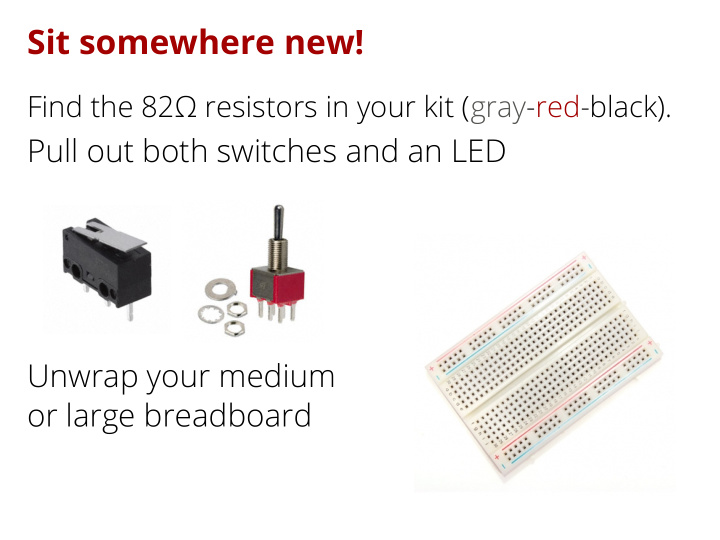



Sit somewhere new! Find the 82 Ω resistors in your kit (gray-red-black). Pull out both switches and an LED Unwrap your medium or large breadboard
ENGR 40M, Lecture 6: Switches, logic, and truth tables Steven Bell 7 July 2016
By the end of today, you should be able to: Use a breadboard to make circuit connections Given a circuit with switches , write the truth table , and vice versa. Draw a state diagram for a simple system
Switches make or break an electrical connection One throw Two throws One pole SPST SPDT Two poles DPST DPDT
You can test connectivity using the resistance setting on your multimeter. You have a DPDT switch in your kit. Figure out which pins correspond to which numbers on the schematic. 1 2 3 6 5 4
Breaking break: Switches
Breadboards are designed for connecting electrical stu ff together. They're internally connected along the orange lines below.
Breaking break 2: Breadboards!
Let's connect up an LED: 82 Ω 4.5V Flat side The fl at side (and the short lead) mark Shorter lead the negative side (cathode) of the LED.
Now team up with the person next to you, and build a two-switch circuit that turns the LED on when both switches are pressed . Modify your circuit to that the LED turns on when either switch is pressed . Challenge: Make the LED turn on when one or the other - but not both - of the switches is pressed.
Build a circuit using your limit switch so that the LED turns on when the switch is pressed . Modify the circuit so that the LED is normally on and turns o ff when the switch is pressed. Once you get it working, help your classmates out!
Truth tables
Draw a truth table describing when the LED lights up, as a function of A, B, and C. Use "0" for open, and "1" for closed. A V dd B C
Designing the useless box
Breaking break 3: Carbon monoxide detector
Recommend
More recommend